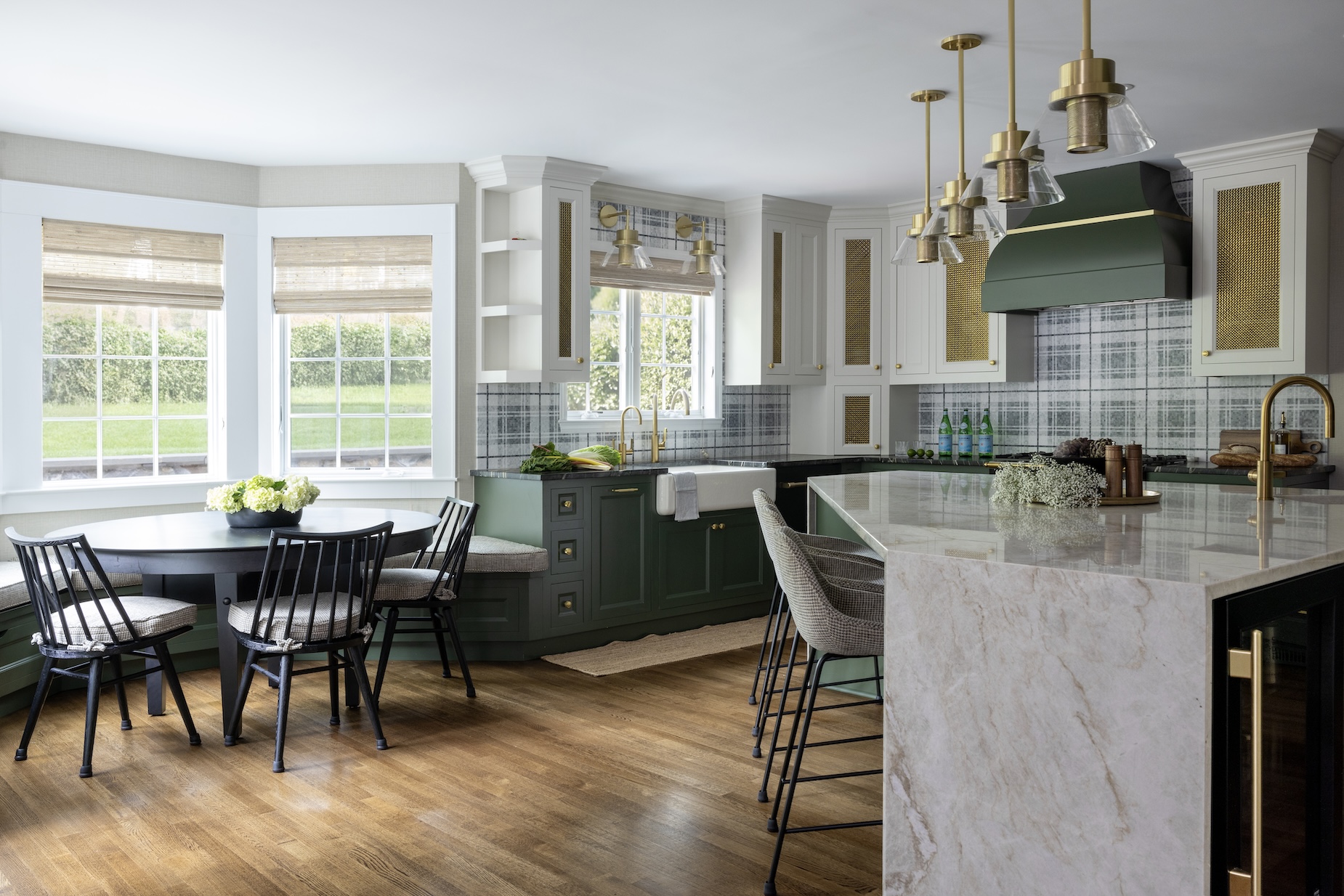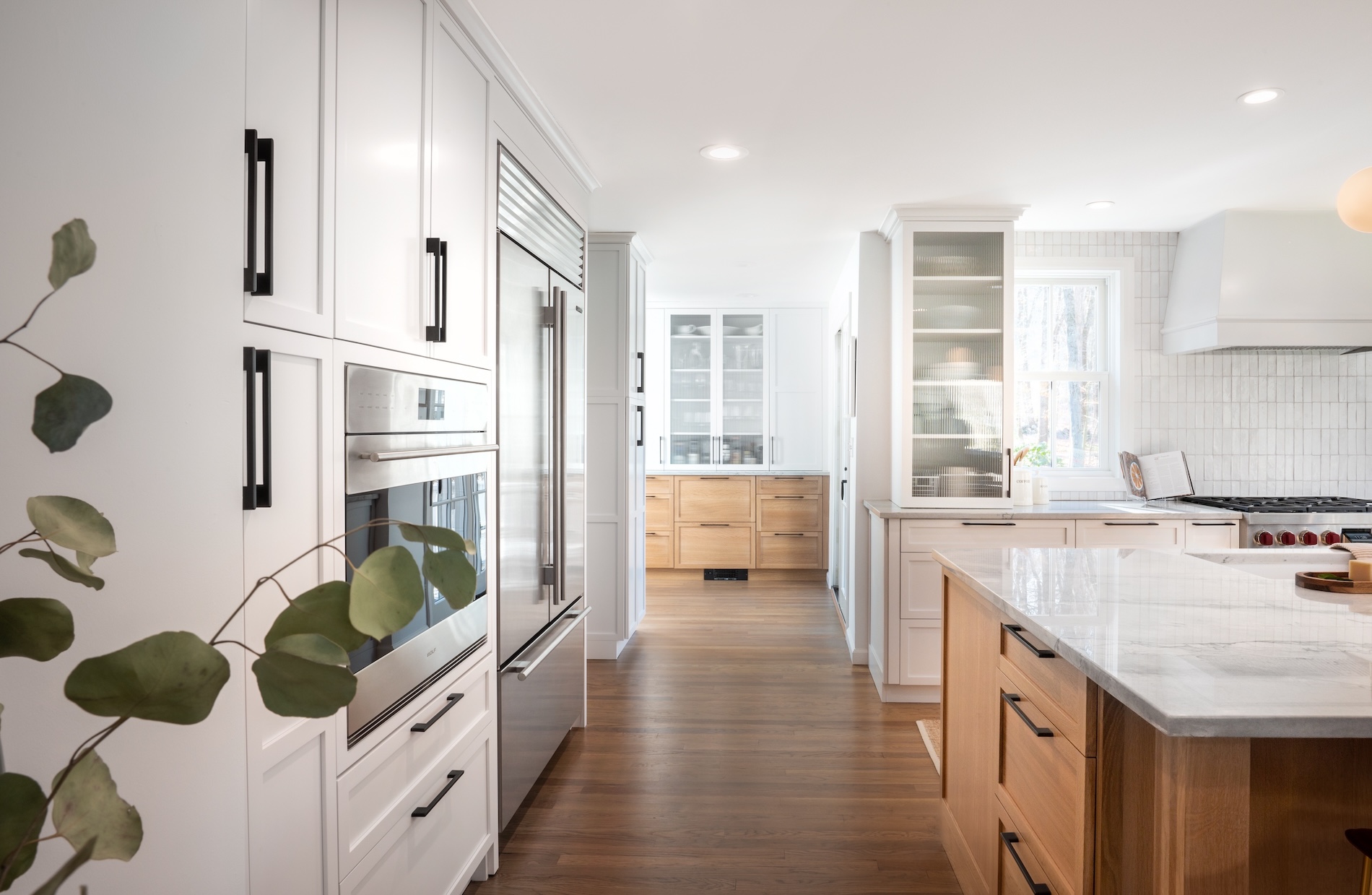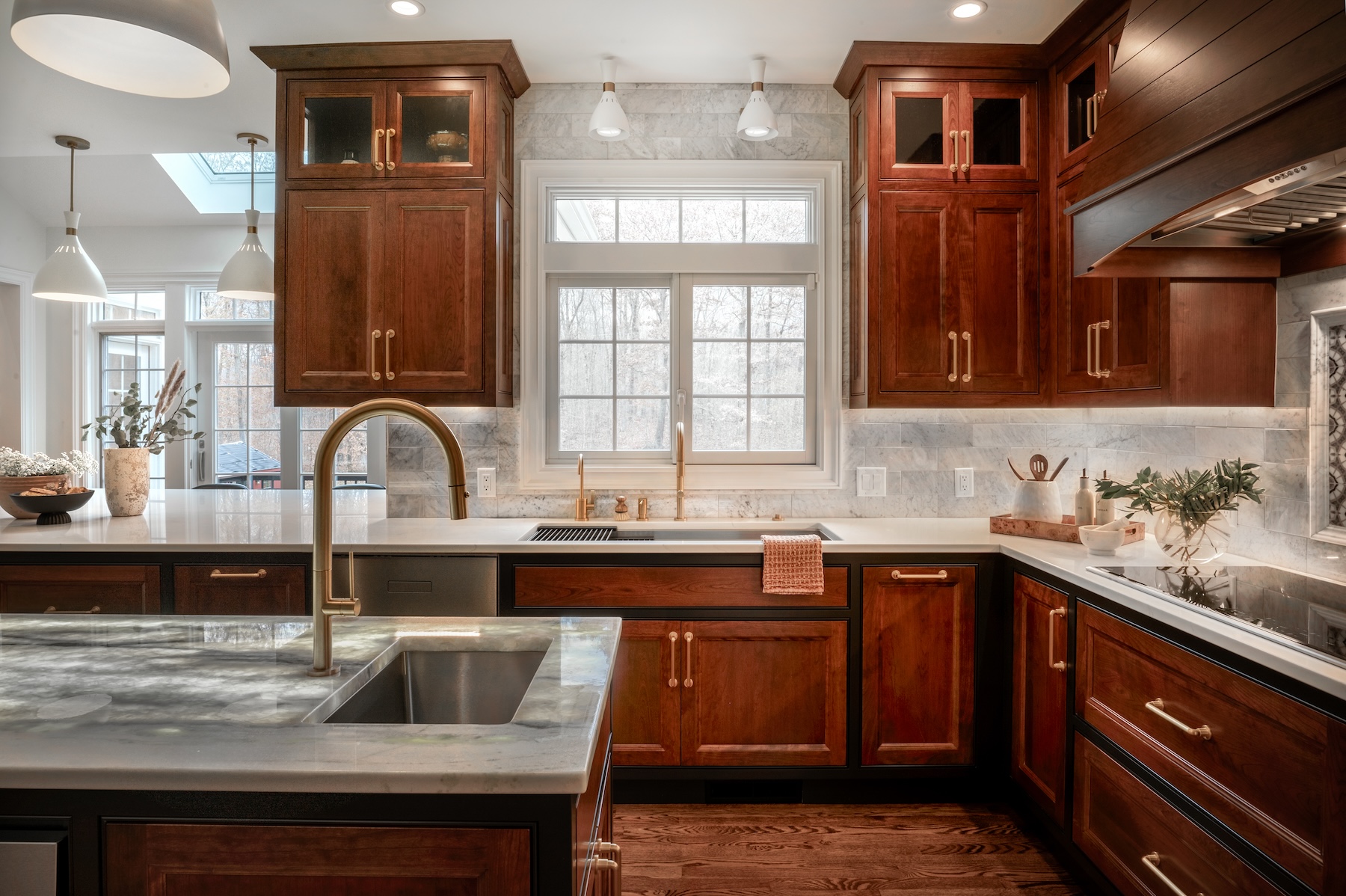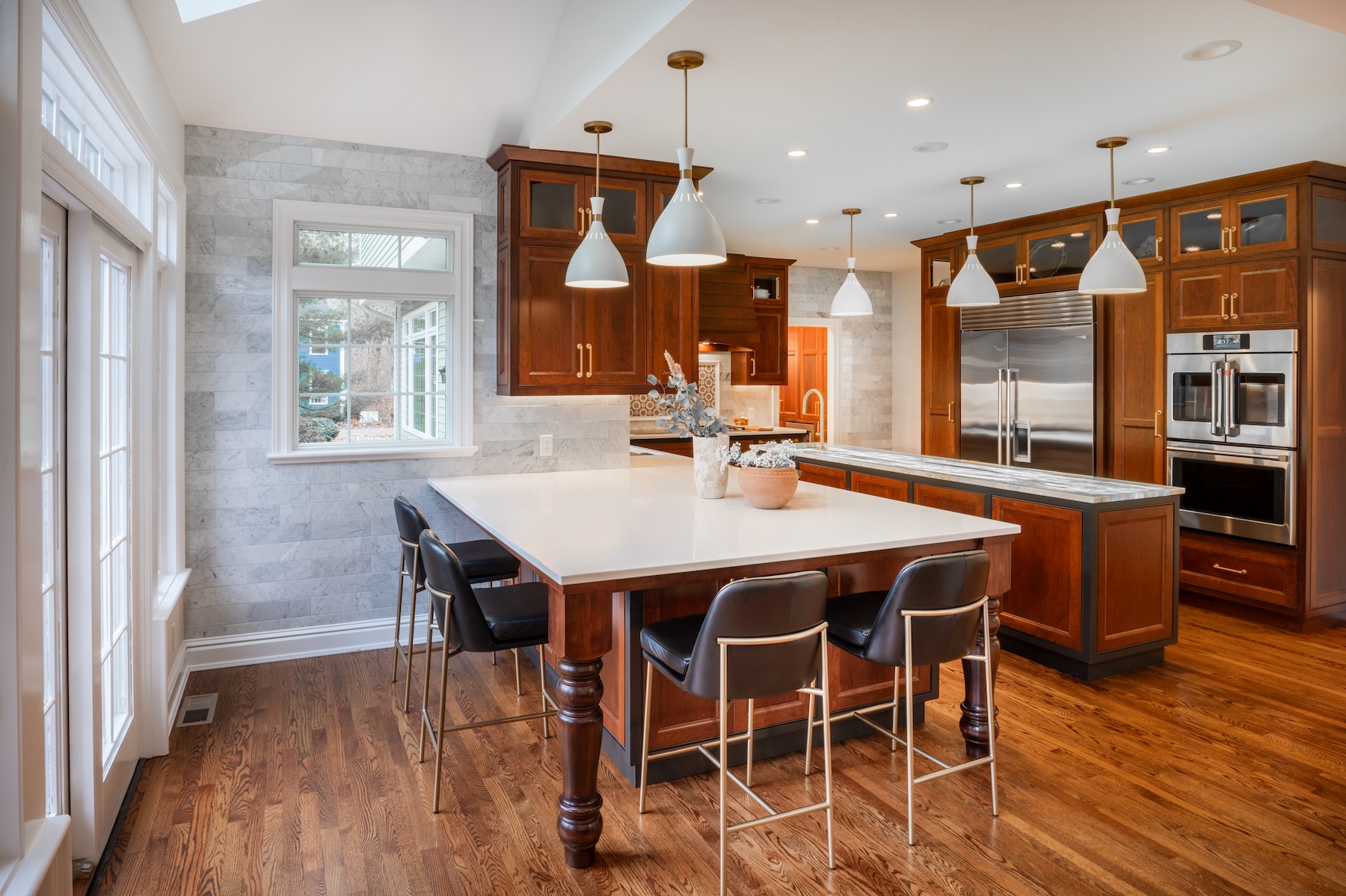The divisiveness of the mantra “bigger is better” applies to design in so many ways.
Would you rather drive a Mini or a Tahoe? For your birthday, a nice small gathering… or a large bash with everyone invited? A friend may strive for the mansion on the hill, while another longs for a tiny home. Is a small, cozy bedroom ideal, or is an open and airy space to sleep more comforting and relaxing?
Individual taste truly dictates a preference for size in day-to-day life. From the perspective of your designer, bigger often means a bigger challenge. When you think about a kitchen, it would seem obvious that the more space you have, the better your kitchen will be. On its face there may be some truth to this, but the issues begin to arise when your space is large enough that it won’t be properly utilized when conventional design methods are applied.
The Traditional Kitchen Triangle
For many, many years designers have been learning how to make a kitchen as efficient as possible because kitchens were often confined to a 10 foot by 10 foot or 12 foot by 12 foot box, and very little more.
This type of kitchen space was responsible for the development of the concept of the “cooking triangle”, which is designed to fit appliances into a small space in such a way that it’s very efficient for the home cook.
Corner access cabinets, microwave ovens over ranges, and storage in every nook and cranny were the norm because in most homes, kitchens were not the center of attention and were designed for a single cook, and therefore didn’t need to take up too much space.
This all changed at the turn of the century, when large custom homes were being built throughout the country, and the space for a kitchen grew substantially larger. Interestingly, if you look at so many of those homes, the kitchen is still confined to a small square, and the eating area takes up a similar amount of room adjacent to it, often on the other side of a peninsula. It became difficult to conceive of a new way to properly use all of the additional space. And the cooking triangle theory was in large part to blame.

Designing for Large Kitchens: A Custom Approach
Today, most designers have abandoned the cooking triangle in favor of new layouts and arrangements—including kitchen islands, separate cooktops and wall ovens, and other creative ways to manage a larger space. By combining the eating area with the kitchen itself, the functionality of the space is redistributed.
These layouts work very nicely for medium size kitchens. For example, when a wall is torn down between the kitchen and a formal dining room, this type of space and design is often possible. But what about a truly large kitchen?
By large kitchen, we mean something 20 foot by 20 foot or even larger. When you have a space this big, many of the rules that define how designers traditionally lay out a kitchen simply don’t apply. There is truly no “one-size-fits-all” here, which is why these types of spaces require a totally custom approach.
While every large kitchen space is different, and while needs vary from home to home and family to family, there are some general guiding principles and ideas that help make the most of your upsized space:
Station-Based Cooking: A Smarter Way to Use Large Kitchen Space
While most of the design industry was still pondering the cooking triangle, Design by the Jonathans had given up on that idea and developed a different approach. I’m a fairly prolific home cook (if I do say so myself), so my “station-based” cooking approach drove the designs of our kitchens from day one.
We’ve been quietly using my approach to this day, and only recently the design industry standards have changed to a similar idea. So, what is it, exactly?
The idea is to divide up a kitchen into a variety of spaces where activities are conducted, and ensure that activities that occur in sequence are placed nearby one another.
For example, your “food supply station” would likely included your refrigerator, freezer, and pantry storage. We often put all of these pieces together on a single wall for convenience. But what happens next?
If you’re removing something from the refrigerator for cooking, there’s a very good chance that you’ll need to rinse or wash it and then slice, chop, or prepare it in other ways—all of which happens at the “food prep station”. You also have the “cooking station”, “cleaning station”, and “eating station”, as well as a “defrosting station” (usually just a microwave), and more obscure spaces like a “baking station” or “coffee station”.
Your “food supply station” should be adjacent to your “food prep station” and your “defrosting station”. The “defrosting station” should be near your “eating station” but also nearby your food prep station. And the “food prep station” should be adjacent to your “cooking station”, and on, and on, and on.
If this sounds confusing, that’s because it is! But only if you look at it in writing. When you see a kitchen properly laid out using station-based cooking, the flow makes a lot of sense. And to properly lay this out, you either need to be an avid cook with a good amount of time on your hands, or you need an excellent designer who understands this theory in full.

The Second Sink: A Must-Have in Every Large Kitchen Design
When you use station-based cooking as your guide, what was once a frivolous detail becomes necessary in almost every configuration of a large kitchen. You need that second sink.
The assumption is that because your space is large, your “food prep station” and your “cleaning station” generally won’t be in the same location. There are a few exceptions to this rule, but for the most part, the way that you work through a large space will dictate that these stations are apart from each other.
Your prep sink doesn’t have to be very large, but it has to be properly located. And we recommend pairing it with trash and recycling pull-out bins in the same location, as well as a garbage disposal if you use them.

The Second Space: Seating Design in a Large Kitchen
One of the toughest choices in kitchen design is deciding whether to eat at your kitchen island or to shrink or eliminate the island in favor of a table and chairs. But, you have a large kitchen, and therefore you can have the best of both worlds!
You can have your island seating for casual meals, snacks, or gatherings, and a cozy table and chairs for family dinners and other more intimate gatherings. If you find that you don’t need a kitchen table, perhaps you create a second island that’s just for seating near the island that you use for cooking. So many options!
Keep in mind that these design choices must be intentional—think through what you really want to experience day-to-day, and it will drive the decision-making for your kitchen design.

Spreading Out: Functional Zones for Luxury Kitchens
When you have a large kitchen, you have the luxury of being able to spread the spaces out. You want storage and efficiency, but you don’t need to cram it into a tiny footprint.
When you’re designing with station-based cooking, you can space out your adjacent spaces so that there is some intermediate space between each station—perhaps some long-term storage for dish sets that you rarely use but want to have on-hand, or maybe a couple of kitchen appliances that you use once in a blue moon but really hate lugging up from the basement.
Mixer lifts for your mixer, Cuisinart, and blender are a great way of utilizing your space and spreading out your functional stations in a way that make the kitchen feel both grand and purposeful at the same time.
Size Your Appliances: Tips for a Large Kitchen Design
Installing a 36-inch French door slide-in refrigerator with a bottom freezer generally isn’t the best way to utilize the space in a large kitchen. Consider a 48 inch built-in side-by-side refrigerator and freezer, or even 30 inch or 36 inch separate refrigerator and freezer columns for added storage and functionality.
An oversized 48 inch cooking range may seem like overkill… until you try it and realize what you’ve been missing! Go big where you can, and the space will feel properly proportionate.
There are so many other tips and tricks—and each large kitchen calls for its own solution!
So, what is the best way to approach the design of your large kitchen? That’s an easy one—get in touch with a designer! And make sure your designer is good at what they do and that they understand the latest theories on kitchen design and design for large spaces.
Of course, if you want to be sure that your designer can do all the above, the easiest way is to contact Design by the Jonathans.

Jonathan Gordon
Owner & Lead Designer









